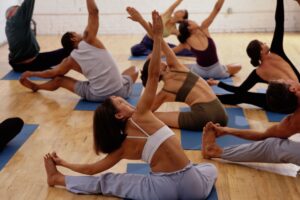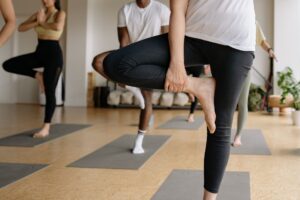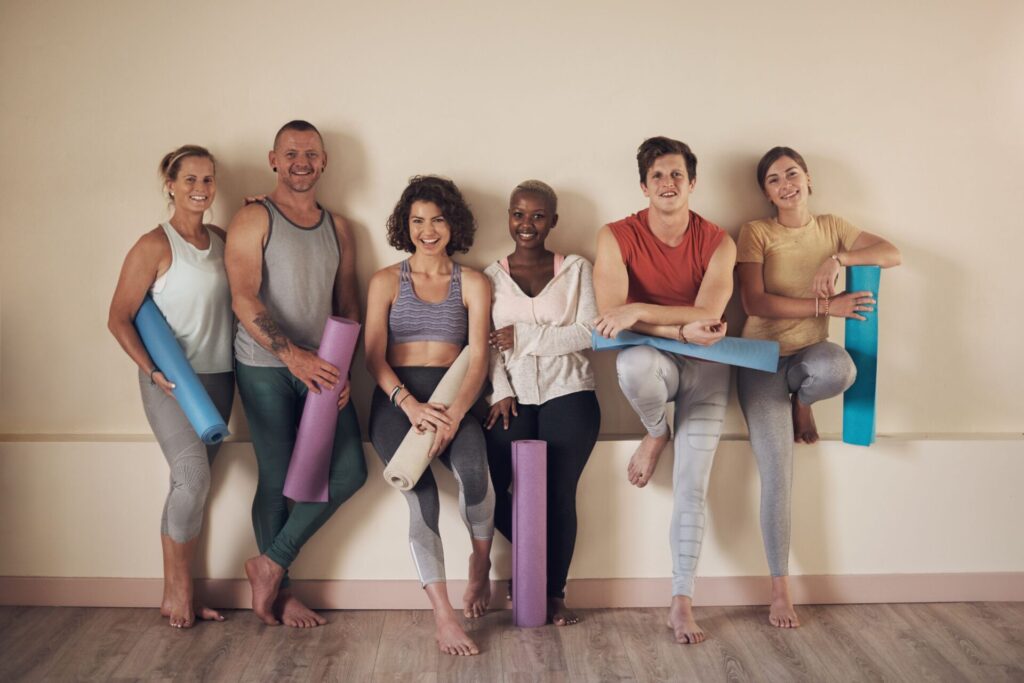As an aspiring yoga instructor, you’ll frequently find yourself spending hours arranging your courses. I used to do the same thing when I was new to the practice and trying to replicate the wonderfully choreographed yoga sessions that I had seen great yogis perform. I would spend hours reading tales, self-help, and spiritual literature in search of inspiration. The main issue was that I would occasionally have a terrific lesson, but most of the time it simply did not work.
I’ve discovered over the years that it would be best to just go with the flow and not take myself too seriously. Plan your lessons, but for the best class experience, I think a mix of preparedness and improvisation works best. In reality, I merely take a copy of my no-prep yoga plans listed below when I don’t feel like planning ahead and heading to the class. I’ve discovered that combining preparation and improvisation can result in impromptu and incredibly engaging class discussions. This is my experience and your guide.
Table of Contents
ToggleSo The Big Question!
Yoga is the ideal amalgamation of body, mind, and soul thus it is important to plan a class that can tap all these aspects for your students. It is overwhelming and thus we hope that these pointers can help you plan a yoga class that solves the misery of everyone on schedule.
Find Who You Wish to Help and how will you do that?
The first and most important step in the process is finding and understanding your target audience. Primarily to ensure that you know what poses, themes or overall structure will work for you. So where to begin?
- Degree of experience: it is extremely important to learn how experienced your students are. Do they fall under the category of beginner, intermediate, or advanced as it will influence the complexity of the pace of your class? A student who is learning yoga for the first time might require easy asanas and a slow pace whereas an advanced practitioner can find a fast rhythm and rather challenging poses.
- Intent: Next you must know what are your student’s intentions. Do they want to practice to relax and release stress or want to build flexibility and strength? Once you know the combined goals of your class you would be able to meet their expectations easier than ever.
- Demographics: Know the gender, age, and restrictions of all your students. To know better, for instance, if you are holding a class with seniors you must focus more on breathing exercises and gentle movements, rather than including strength-building asanas.
If you know your audience you have a class that is inclusive, safe, and tailored to the needs of everyone present.
Theme The Practise

The golden thread that unites the poses, breathing, and experience is called theming. It’s what makes students feel so deeply rooted in their work and in themselves that, for ninety minutes, they are able to be fully present.
The process of designing a yoga lesson includes determining your focus and the desired outcome for your students’ post-practice states. It’s acceptable if you’re not naturally good at theming! Make connections with other instructors who are willing to share and exchange ideas with you and who have found a method that works for them.
You can make the theme of your yoga courses as simple or as sophisticated as you like. When approaching them more straightforwardly, start by thinking about the “why,” and “what.”
- Why did I write a certain asana sequence or select the one I did?
- What makes me want to tell my pupils about this? What are the advantages for them?
The first step in letting the theme “reveal itself” is to ask why. You can find patterns that, when combined with the appropriate dharma, tone, and language, can produce transformative classes by taking a moment to consider why you are teaching what you are teaching and how it will be a useful tool for the students who come to your class.
Every lesson you teach can have a different theme. Moreover, you can alter your theme every week, every month, or every three months, based on how much you choose to delve deeper into each topic or theme. You should think of theming as an essential component of your own education because it will undoubtedly present opportunities for investigation and inquiry.
Build A Sequence

Building a comprehensive and successful yoga session that enables students to transition between locations and poses in an easy-to-understand but secure way is known as sequencing. Yoga instructors must anticipate, accept, and respect the circumstances, capacities, and realities of their students when designing yoga class sequences.
They must also deliver yoga to their students in a way that suits their needs. Recognizing the locations of the students is crucial. Instead of hurriedly switching up poses at the price of relaxation and stability, continue from there. Here’s how to put together a sequence that is balanced:
- Start with warm-up and gentle movements to practically warm up the body. Include mild movements such such as stretches, asanas such as child pose, cat-cow, or even joint rotations. It will ensure that your student and you have both a perfect mind and body for the following demanding poses.
- Anyone who is taking a yoga class is coming for this. So begin the routine that caters to each and every part of your body. For instance, start with your back and include asanas such as the locust pose, then move to exercises for your legs like the warrior pose, and then for your arms, shoulders, neck, and your face. Incorporate a routine where you include a hard pose after an easy one and then follow the routine.
- Ensure that they don’t immediately stop the practice as it will break the entire routine so in the third section include supine poses and seated stretches to calm your body. You can include pranayama and meditation poses at this hour as the prime need for this section is to avoid the overwhelming feeling.
- It is always advisable to end your designed routine with a relaxation pose or savasana. It will allow your students to leave with a refreshed mind.
Yoga is more than just physical postures and asanas it is connected with breathing to cultivate mindfulness. Thus, with asanas, it is extremely important to use simple techniques of pranayam like Nadi Shodhana or Ujjayi breath that are easy to follow and effective.
Following that you can include mindful activities such as a moment of silence or guided meditation to deepen mindfulness. In fact a key tip is to always remind your students to mind their breathing and be present in the moment and enhance their experience and promote stress relief.
Also read: Cues for Yoga Teachers
A few more tips
Most yoga teachers forget that yoga works best when you integrate mind, body, and soul and thus giving a safe and nurturing environment is extremely important. So, ensure that you provide a rather welcoming environment that contributes to an overall experience. Use a soft warm light to create a calm environment.
You can also use natural light to connect your students to nature. Ensure that the room has a comfortable temperature if it is too cold or too hot it can tolerate their focus. Arrange for props and equipment required for the training even if the students need to carry their own mats or straps always have one or two to spare.
As per our experience, we have seen that music can change the entire ambiance of the class. Thus, lay a thought on selecting a playlist that aligns with the theme of your practice. Work with a mixed genre for instance use calming soft music for warm-up and cool-down and a rather upbeat track for the asanas practice.
Review and Practice

The end pointer that we can think of is review, just revise your plan entirely and thoroughly to ensure that it flows smoothly. If need be, practice the plan once yourself to check if the asanas routine is too tough or too rigid and needs adjustment. Once you review your routine you will feel confident to begin your training class. Just a few points that you can consider.
Timing
Ensure that the entire schedule fits the allotted time. For instance, you have a 40-45 minute session: put 10 minutes aside as warm up, 20 minutes for asanas, another 10 minutes for cool down, and 5 minutes for savasana. Make these adjustments and transitions as smooth as needed to maintain a seamless flow and away from the risk of injury.
Therefore, knowing how to organize a yoga class is crucial to giving your clients a positive experience, regardless of whether you’re a new yoga instructor or you’re teaching staff to teach yoga sessions. When organising yoga courses, there are a few considerations to make, so learn how to organize yoga classes for the type of yoga you specialize in.
Do not hesitate to call out to your fellow yogis if you need assistance right before you teach your first yoga class. One of the best things about Nirvana Yoga School India is that at the end of the program, each student has a new, encouraging group of fellow yogis rooting for them. If you are looking to find your support group, rest assured that even after your yoga teacher training is over there will always be your guide to support you just a call away.

